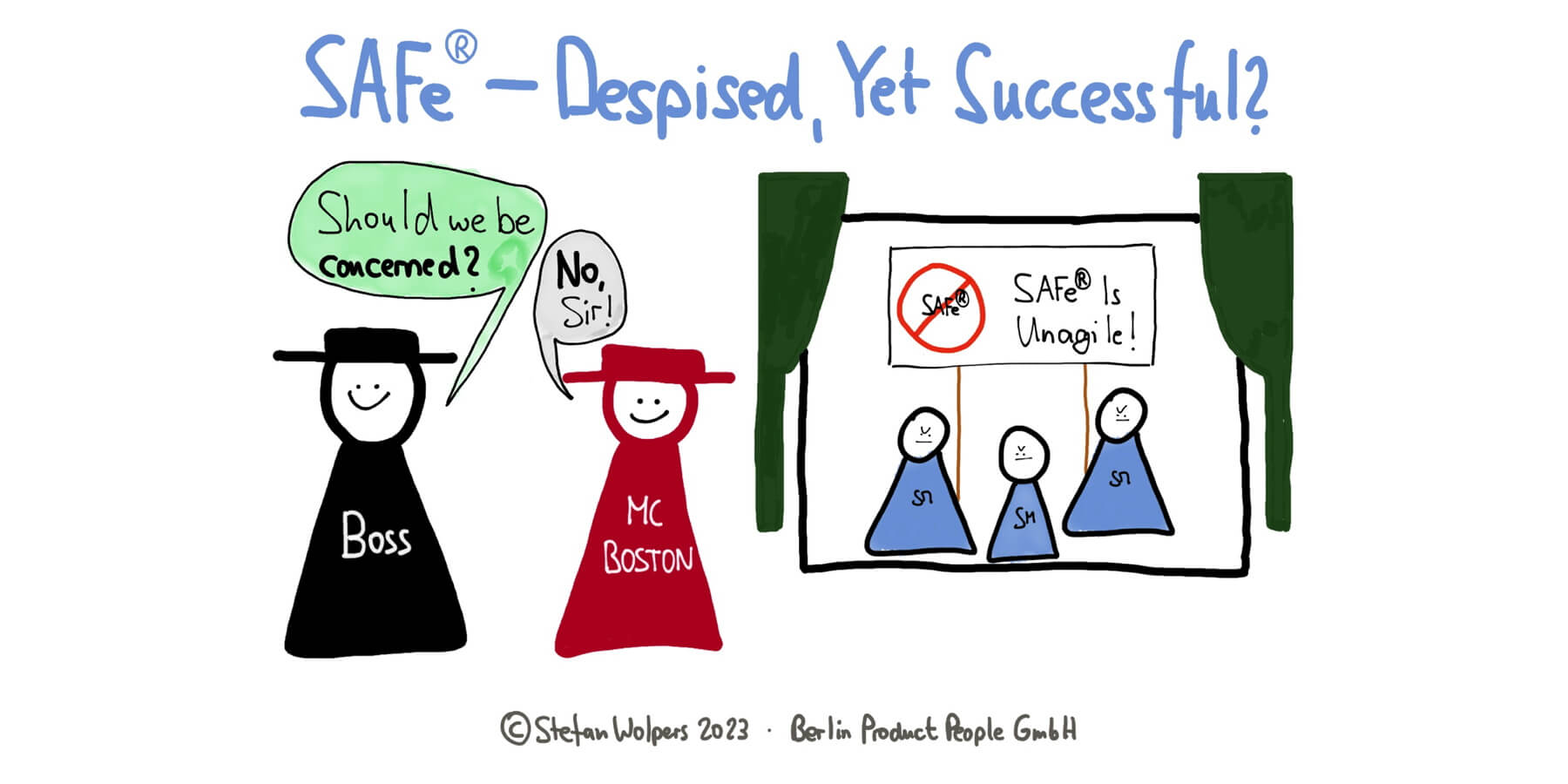TL; DR: SAFe® — Despised, Yet Successful?
Many in the Agile community consider the Scaled Agile Framework designed by Dean Leffingwell and Drew Jemilo as unagile, violating the Agile Manifesto and the Scrum Guide. “True agilists” would never employ SAFe® to help transition corporations to agility. SAFe® is an abomination of all essential principles of “agility.” They despise it.
Nevertheless, SAFe® has proven not only to be resilient but thriving. SAFe® has a growing market share in the corporate world and is now the agile framework of choice for many large organizations.
How come? Learn more about nine reasons for this development.
PS: I have no affiliation with SAFe® whatsoever and consider it harmful. Yet there are lessons to learn.

🏅 The most popular discussion on LinkedIn last week was: From the “Most Damaging Book Covers” series: “Scrum—The Art of Doing Twice the Work in Half the Time.”
🗞 Shall I notify you about articles like this one? Awesome! You can sign up here for the ‘Food for Agile Thought’ newsletter and join 48,000-plus subscribers.
📖 Get notified when the Scrum Anti-Patterns Guide book is available!

👉 Join the community and help create the next edition of the Scrum Master Salary Report!
Nine Reasons for SAFe®’s Winning Streak
Here are nine reasons behind the corporate success of SAFe®: From context to its evolution to bridging management gaps to risk management and alignment with business goals:
- Context is Key: It’s crucial to remember that no single framework fits all contexts. While SAFe might not be ideal for a small startup with a single product, it can benefit larger enterprises with multiple teams and products, complex dependencies, and regulatory considerations.
- Agile Evolution, not Revolution: Transitioning to a new operational model can be tumultuous. SAFe offers an evolutionary approach rather than a revolutionary one. By providing a structured transition, corporations can gradually shift towards agility, ensuring business continuity and reducing potential disruption.
- Bridging Gap Between Management and Development: The SAFe framework provides a structured approach that integrates traditional management practices with agile product development. While the Agile Manifesto prioritizes customer collaboration and responding to change, it doesn’t specify how large organizations can achieve this. SAFe offers a bridge, allowing corporations to maintain hierarchical structures while embracing agility.
- Comprehensive and Modular: SAFe is designed as a broad framework covering portfolio, program, and team levels, making it attractive to large corporations. It’s modular, allowing companies to adopt parts of the framework that best fit their needs. This flexibility can make getting buy-in from different parts of an organization less challenging, bridging the gap between agile purists’ concerns and the framework’s inherent advantages.
- Risk Management: Corporations, particularly stock-listed ones, significantly focus on risk management. SAFe emphasizes predictable, quality outcomes and aligns with this risk-averse approach while promoting iterative development. This dual focus can be more appealing than the perceived “chaos” of pure agile practices.
- Provides a Familiar Structure: The SAFe framework, with its well-defined roles and responsibilities, can be more palatable to corporations accustomed to clear hierarchies and defined processes. It offers a facade of the familiar, making the transition less daunting than moving to a fully decentralized agile model.
- Aligns with Business Goals: While the 2020 Scrum Guide focuses on delivering value through the Scrum Team’s efforts, SAFe extends this by explicitly connecting team outputs to broader business strategy and goals. This apparent alignment can make it easier for executives to see the framework’s benefits.
- Training and Certification: SAFe’s extensive training and certification program can reassure corporations. Having a defined learning path and ‘certified’ practitioners can give organizations confidence in the skills and knowledge of their teams, even if agile purists might argue that a certificate doesn’t equate to understanding.
- Evolution of SAFe®: Like all frameworks and methodologies, SAFe isn’t static. Its creators and proponents continue to refine and evolve the framework based on feedback, new learnings, and the changing landscape of software development and product management.

Conclusion
While many agile purists may argue against the SAFe® framework, its success in the corporate world can’t be denied. Its structure, alignment with business objectives, and focus on risk management resonate with large organizations looking to benefit from agility without undergoing a radical transformation.
What is your experience with SAFe®? Please share your learning with us in the comments.
Related Articles
SAFe ®’s NPS ® Score as a Scaling Framework Is -56 According to 505 Survey Participants.
The Uncomfortable Truth of Scaling ‘Agile’.
Scrum Anti-Patterns Taxonomy — The Big Picture of Why Scrum Fails?
Download the Scrum Anti-Patterns Guide for free.
✋ Do Not Miss Out and Learn more about the reasons for SAFe® ’s Success — Join the 12,000-plus Strong ‘Hands-on Agile’ Slack Community
I invite you to join the “Hands-on Agile” Slack Community and enjoy the benefits of a fast-growing, vibrant community of agile practitioners from around the world.

If you like to join all you have to do now is provide your credentials via this Google form, and I will sign you up. By the way, it’s free.
The article SAFe® — Despised, Yet Successful? was first published on Age-of-Product.com.
